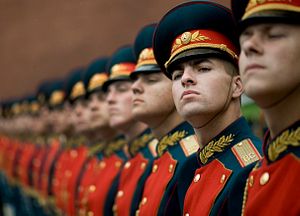Russia’s Minister of Defense Sergei Shoigu told the Russian parliament on February 22 that the defense ministry will deploy an army division on the disputed Kuril Islands in 2017, according to Russian media reports. “We expect to complete the deployment of three divisions on the western and southwestern border. Active work continues to protect the Kurils; a division should also be deployed there this year,” Shoigu said.
The Kuril Islands — known in Japan as the Northern Territories — consist of the islands of Shikotan, Kunashiri, and Etorofu, as well as the tiny Habomai islets. The disputed archipelago is located in the Sea of Okhotsk in the Northwest Pacific. The islands were seized by the Soviet Union in 1945 and have been the subject of a territorial dispute between Russia and Japan ever since.
Following Shoigu’s announcement, Japan’s ambassador to Russia, Toyohisa Kozuki, openly expressed his displeasure over the military deployment on the Kuril archipelago. Furthermore, Japan’s chief cabinet secretary, Yoshihide Suga, said during a press conference on February 23 that “reinforcing the Russian military’s build-up on the Northern Territories… is regrettable and would conflict with the position of our country.”
Japan Minister of Defense Tomomi Inada announced her intention to discuss Russia’s military plans with her Russian counterpart during a meeting on the sidelines of the G20 summit involving the defense and foreign ministers of both countries in Tokyo on March 20. “If the opportunity arises, I will hold negotiations with Mr. Shoigu for a frank discussion of a number of issues,” she told reporters on February 24.
Over the last two years, Russia has slowly been building up its military presence on the islands claimed by Japan including the stationing of new coastal missile systems as well as missile defense systems. In March 2016, I described two of these new systems: “The Bal-E modern coastal missile system fires the subsonic H-35 anti-ship missile with – depending on the variant – an operational range of about 130 to 300 kilometers (80-186 miles). K-300 Bastion-P standard batteries fire the over-the-horizon supersonic P-800 Oniks anti-ship missile with an approximate maximum range of 600 kilometers (372 miles).”
The Russian Navy is also considering establishing a permanent naval base for its Pacific Fleet on one of the islands. However, the fear that Russia will deploy thousands of additional troops on the islands is perhaps unwarranted.
First, as an analysis by the Jamestown Foundation explains, the new divisions mentioned by the Russian defense minister could be Soviet-style “paper” skeleton divisions, in which around 500 officers command about 100 soldiers in peacetime, rather than a full division with 10,000 troops. In fact, Russia only added a little over 10,000 soldiers to its armed forces in 2016 in total.
Second, Shoigu’s comment could also only refer to increasing the size of Russia’s 18th Machine Gun Artillery Division tasked with the defense of the islands. According to Russian media reports, the division is currently being upgraded with new equipment including new air defense systems and anti-ship missiles. The majority of the division is currently stationed in the island of Iturup, the largest and northernmost island in the southern Kurils.
Third, while there have been unconfirmed reports that Russia intends to dispatch additional brigades to the Kurils to form an entire army corps — the basic building block of the Russian Ground Forces remains the brigade, consisting of about 4,000-5,000 troops — Russia’s current manpower shortage and focus on its Western borders makes the deployment of combat-ready brigades at full strength rather unlikely.
































